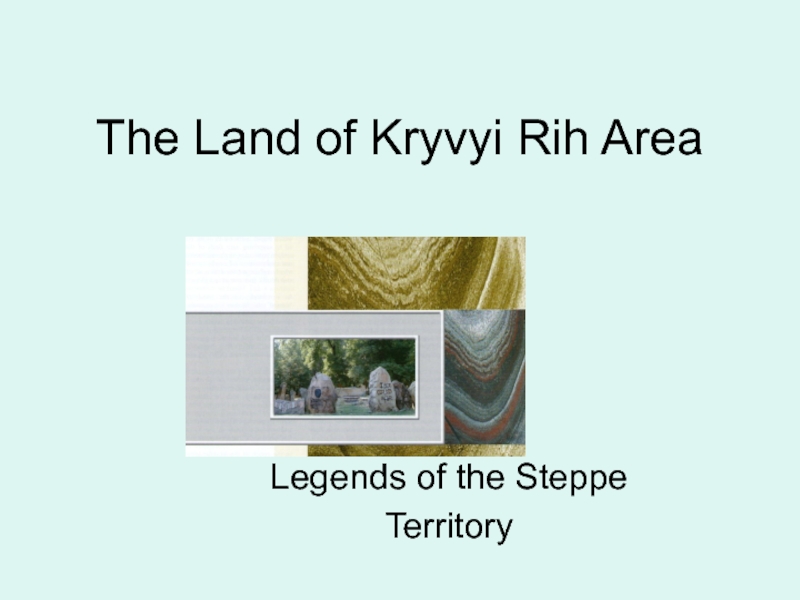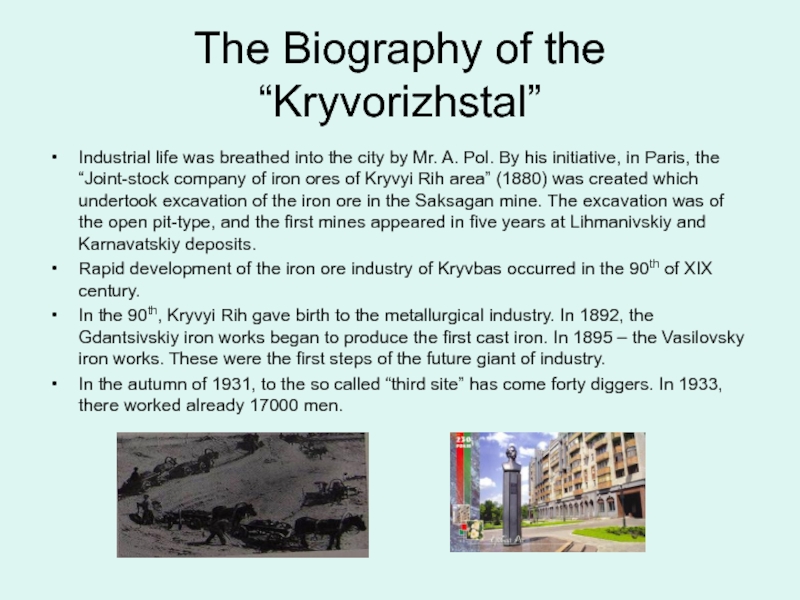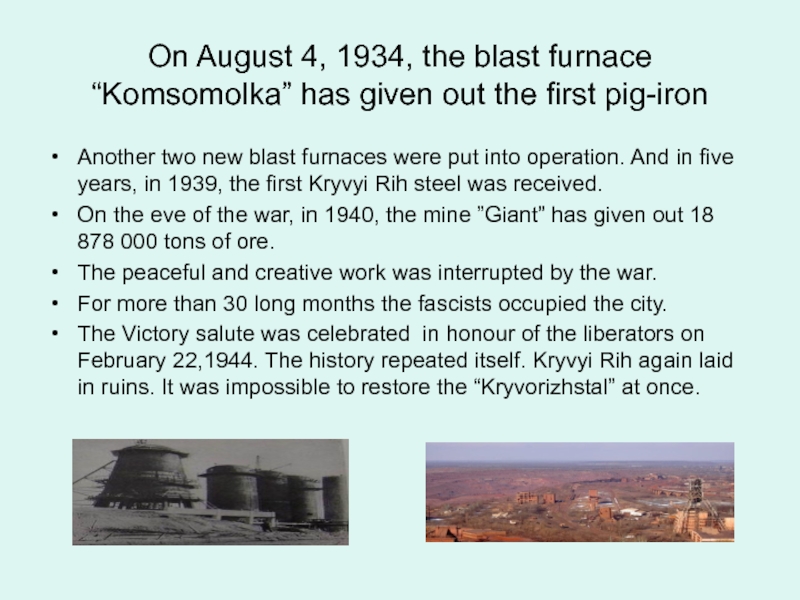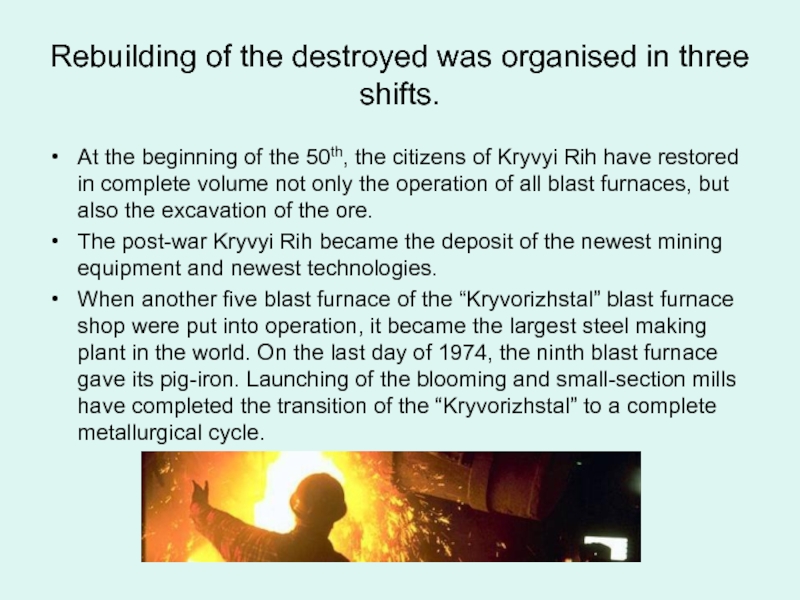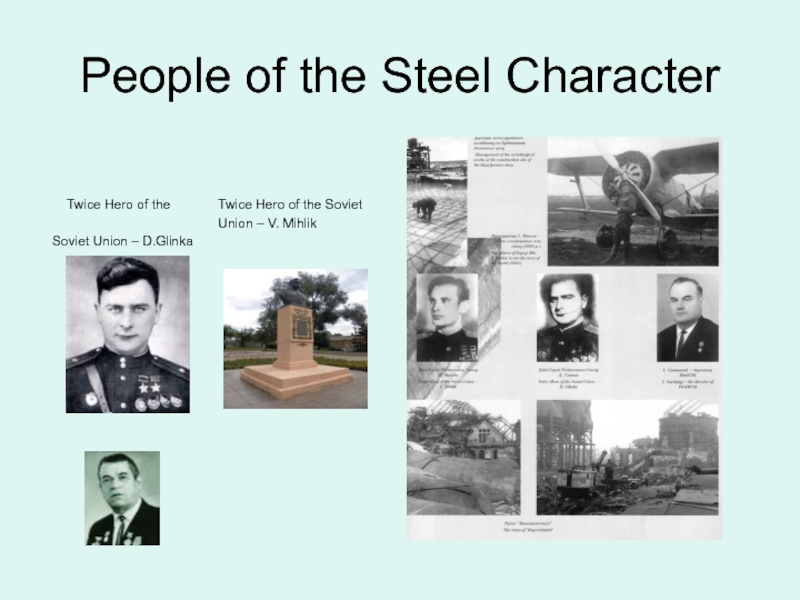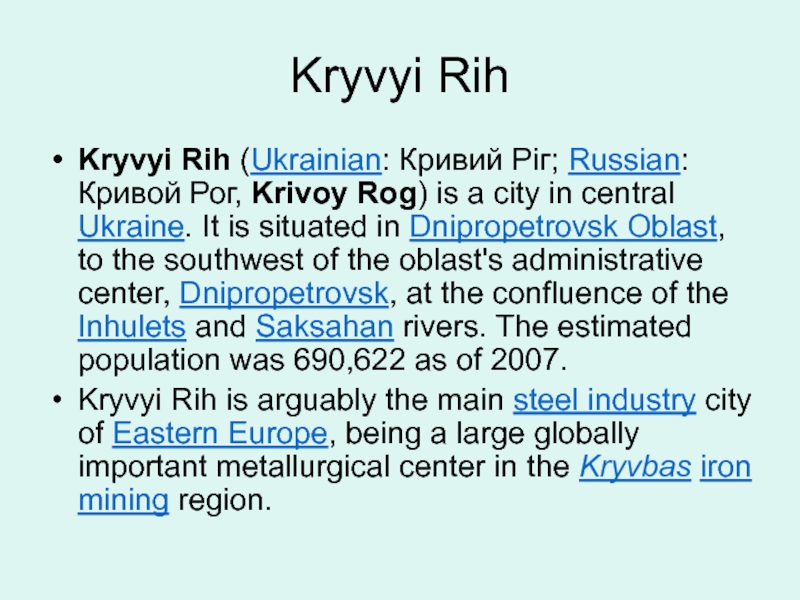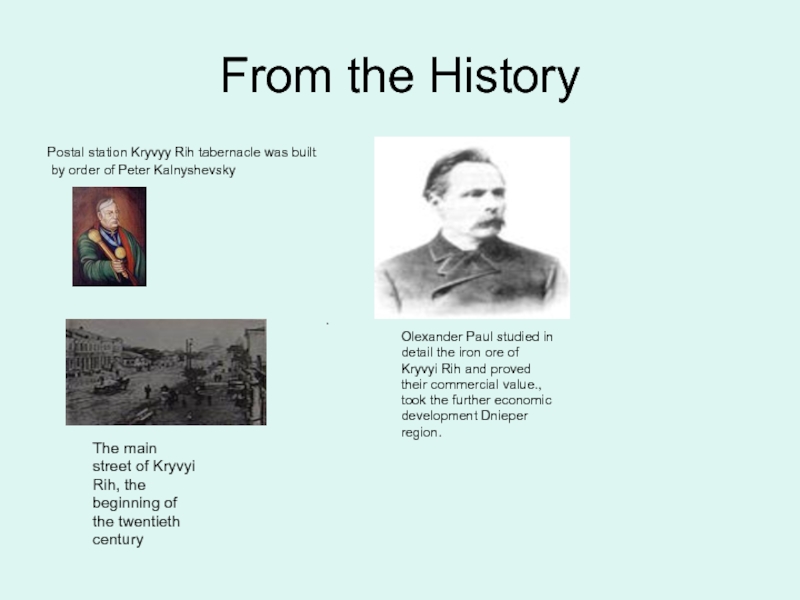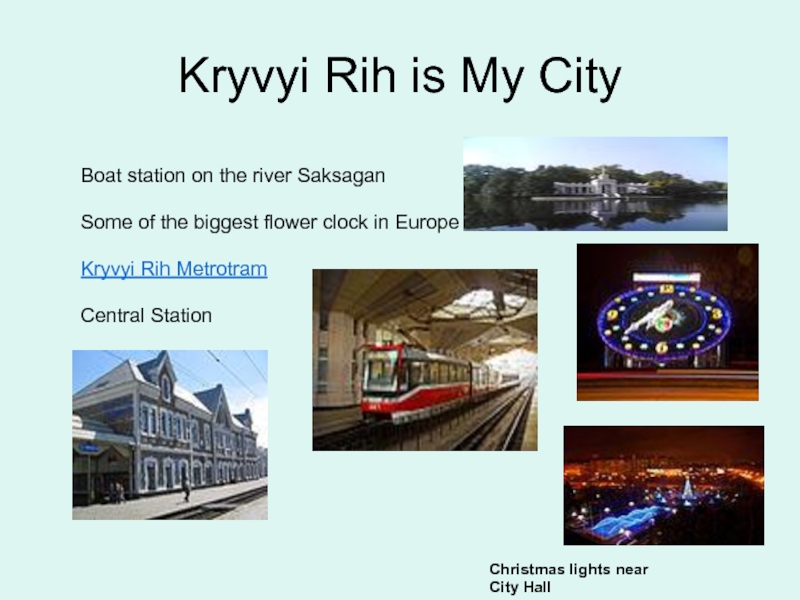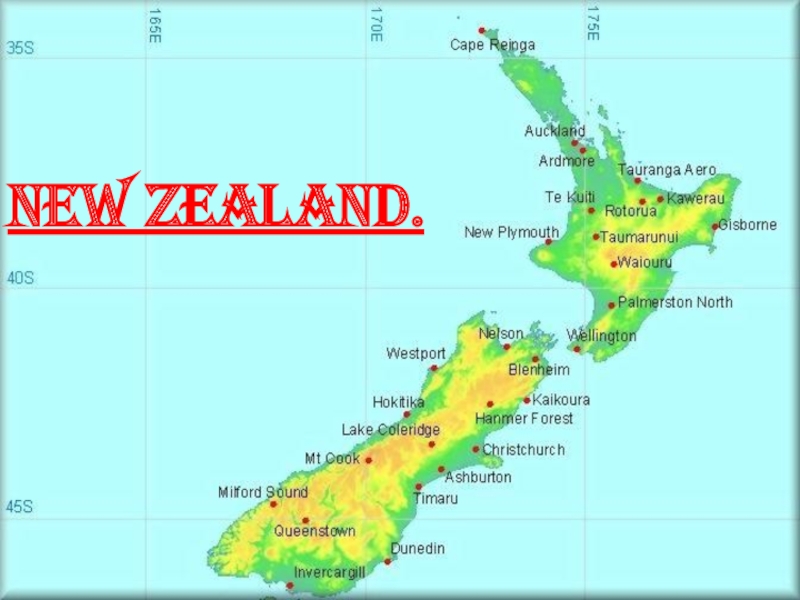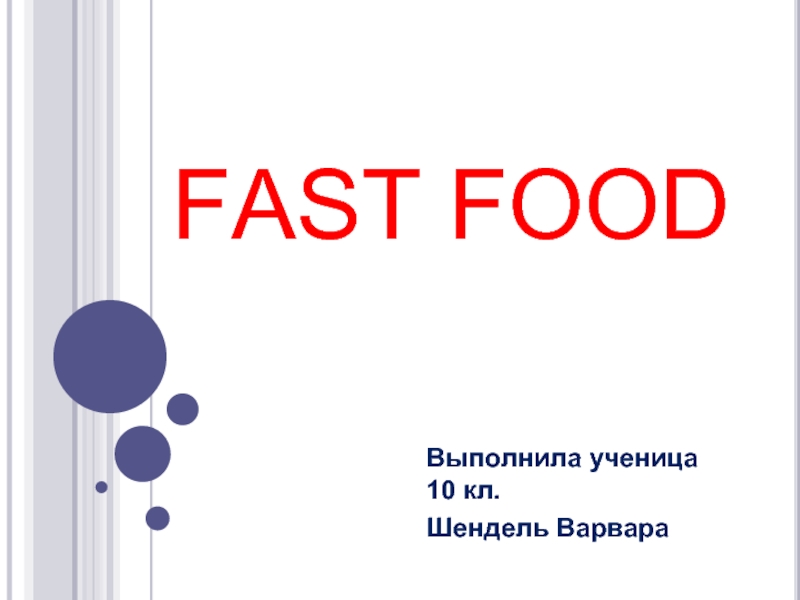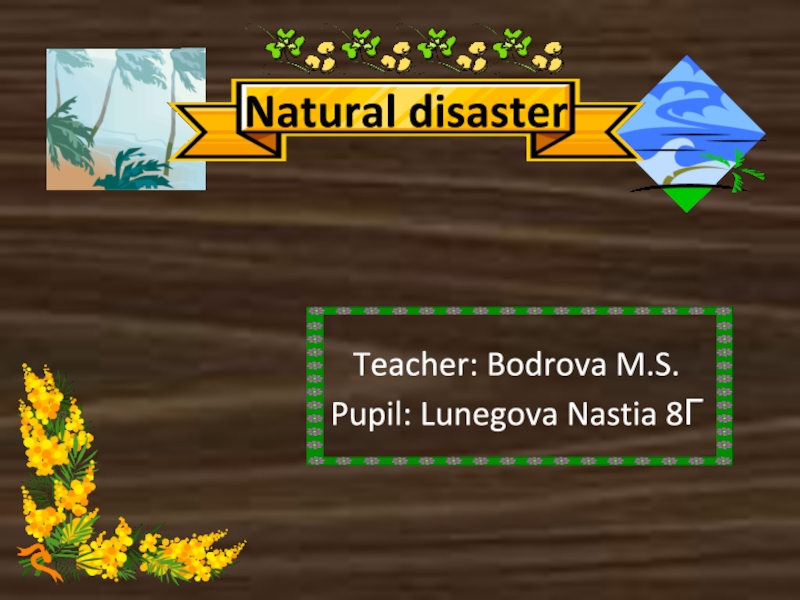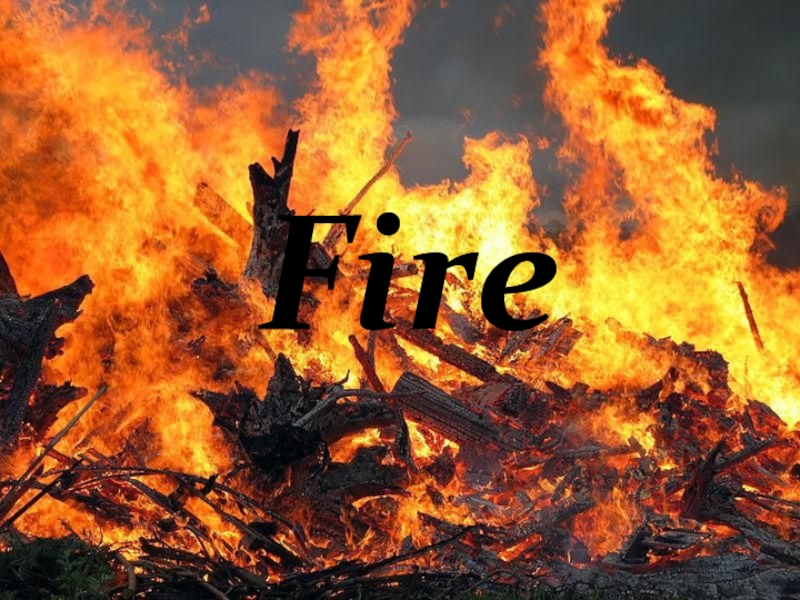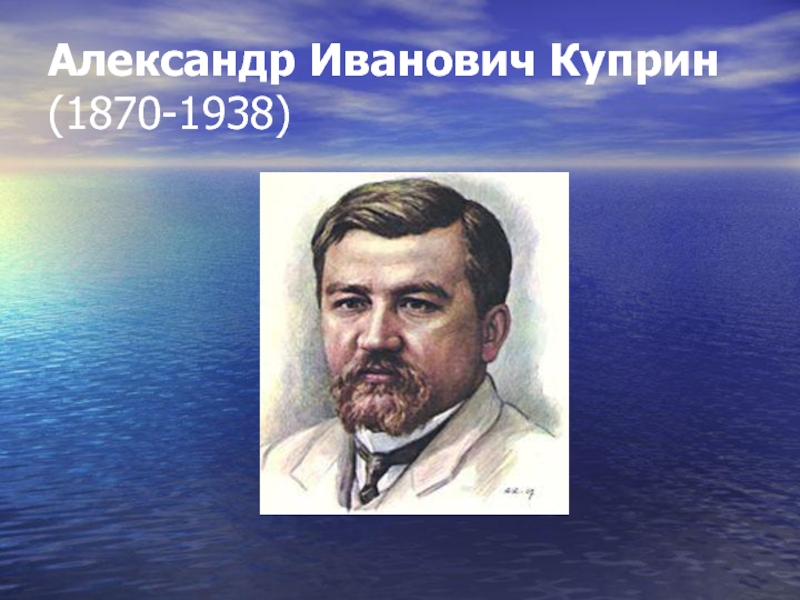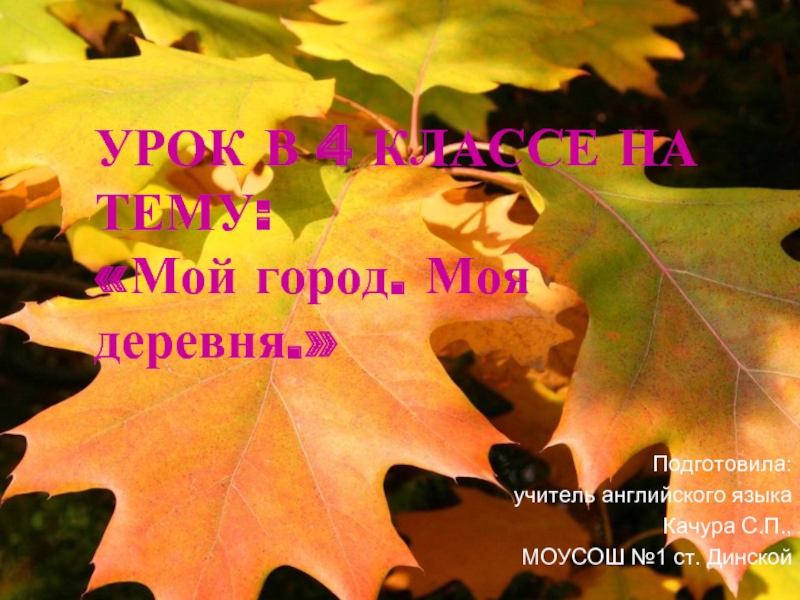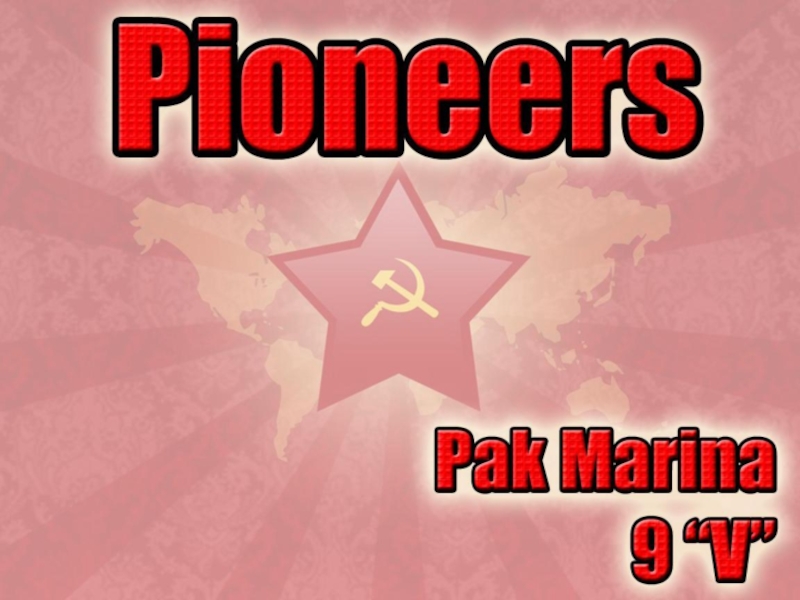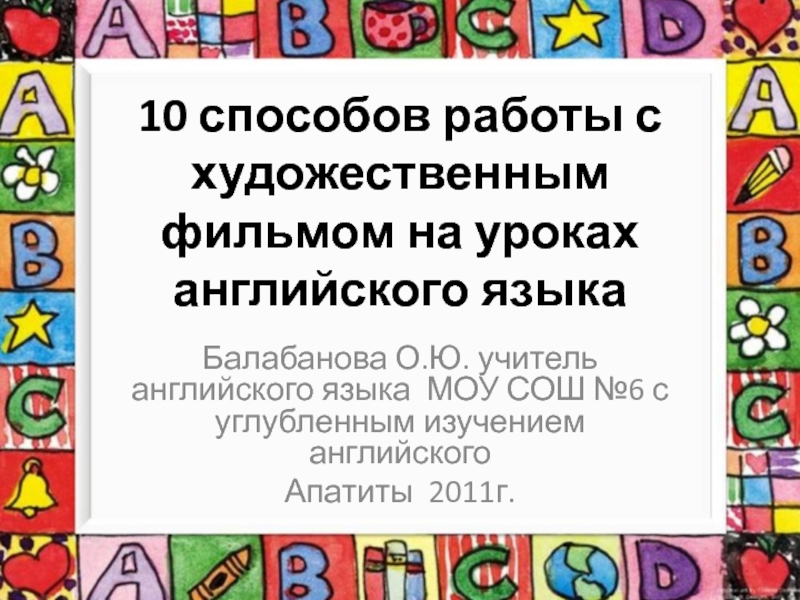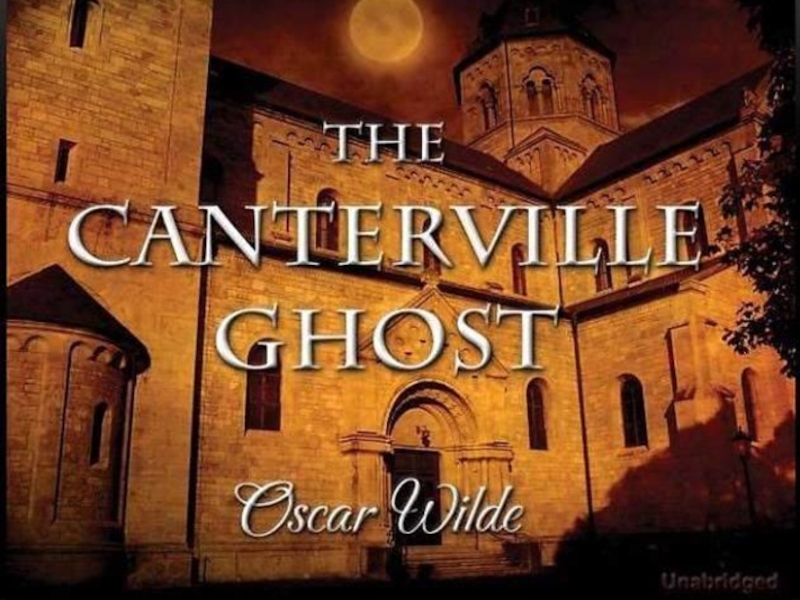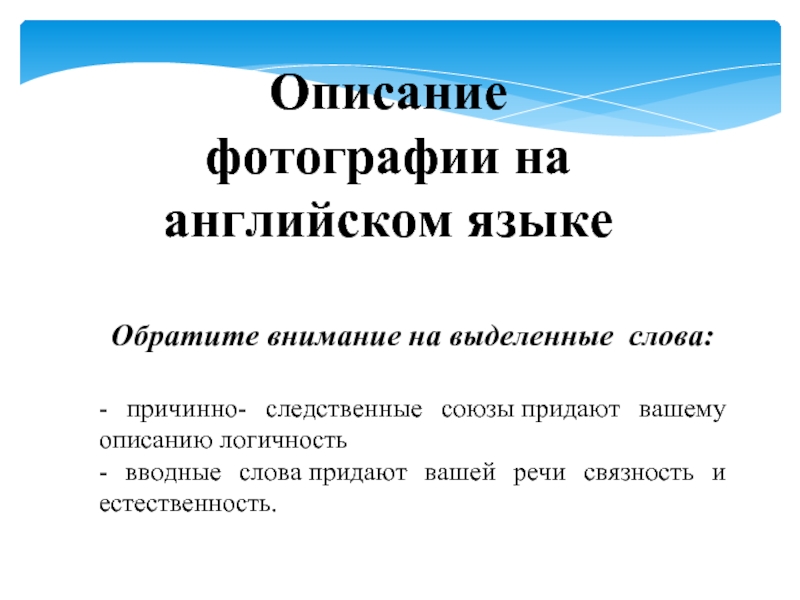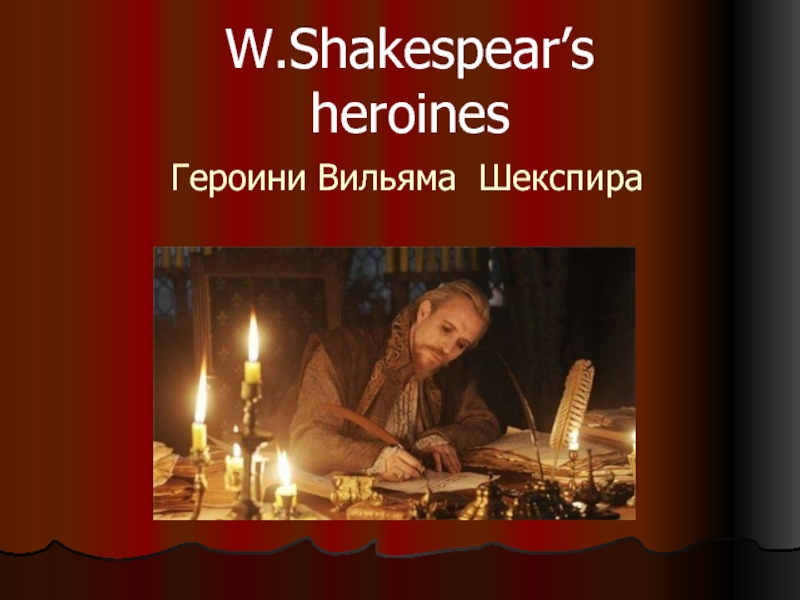Слайд 1The Land of Kryvyi Rih Area
Legends of the Steppe
Territory
Слайд 2A Legend About the Beauty Rudana and Her Lover,
the Hunter
by the Name Ingulets
The Gods punished
the tribe of Rudana by an awful drought, and they expected to receive the victim and the most expensive one that people had:
To have the barns crammed with goods
And, as earlier, all in abounded,
Let the best pair of young people
Offer themselves in sacrifice to the gods!
And the proud beauty Rudana together with her groom unbent and without fear, went to the sacrificial rock.
Rudana went up the rocky peaks,
Resolutely stepped to the edge,
And cried aloud: “Farewell, people!” –
And rushed as a stone downwards.
And not the fall of the body the tribe heard –
But the thunder cracked the granite!
By the impact the ground was stirred up,
And the lightning fired the zenith.
By steep flows of the rain rushed to the ground and hid both lovers. At that place two small rivers merged: the red one, as if with the blood, Saksagan and the muddy Ingulets. And on the surface of the rock there appeared the deposits of iron ore (people say it is the blood of Rudana), the excavation of which brings a considerable benefit to the citizens of Kryvyi Rih now.
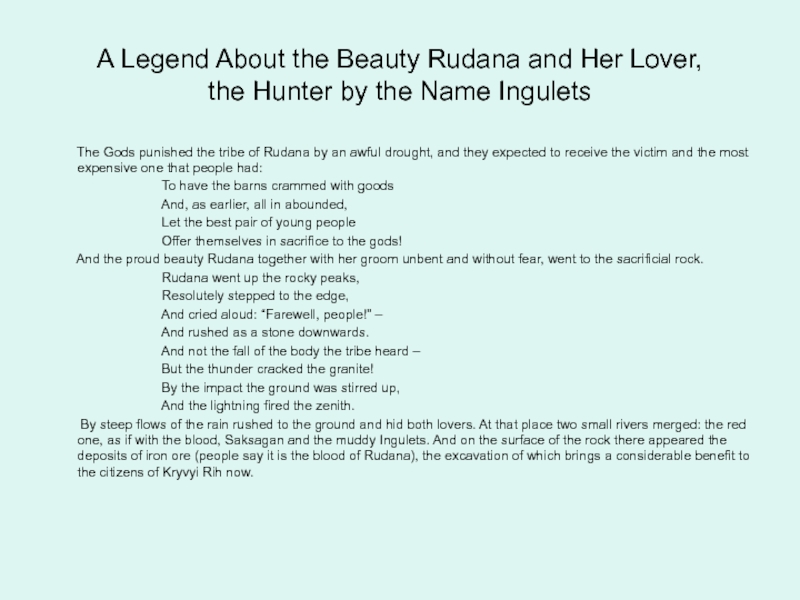
Слайд 3Where did the name of Kryvyi Rih
come from?
In 1734, after creating the New Sich,
the territory of Kryvyi Rih was included into the structure of the Russian Empire. And in February, 1775, the government assigned the Zaporizhya Kish to build a post station at the place of the merge of Saksagan and Ingulets. This honourable mission was entrusted to the clerk of the Kish, Feodosy Kudlik. So, on April the 27th (May the 8th) of 1775 the state post station of Kryvyi Rih started to function with 5 Cossacks from various regiments. Thus, the 8th of May (by the new style) is the official date of the establishment of the post station at the place where the city is located today.
It is hard to explain where the name of Kryvyi Rih came from, though researchers give enough interpretation to the name of the city. In 1781, the academician V. Zuev made a record: “Kryvyi Rih means the stone cape between Saksagan and Ingulets, the one, that the small river Saksagan, in the length of five miles envelopes this capenin such a way that the fourth of the mile distance is between the two knees of the cape, that is why it carries the name Kryvyi Rih”.
One more etymological version of the name is stated by the scientists of the institute of linguistics named after O. Potebnya. Scientists assert, that it resembles the large gully, which had the name, the Curve Gully (Horn). In reality, on the maps of the Novorossiyskaya province, dated 1785, the place of the lowest merge of the rivers Ingulets and Saksagan is designated as the Kryvyi Yar.
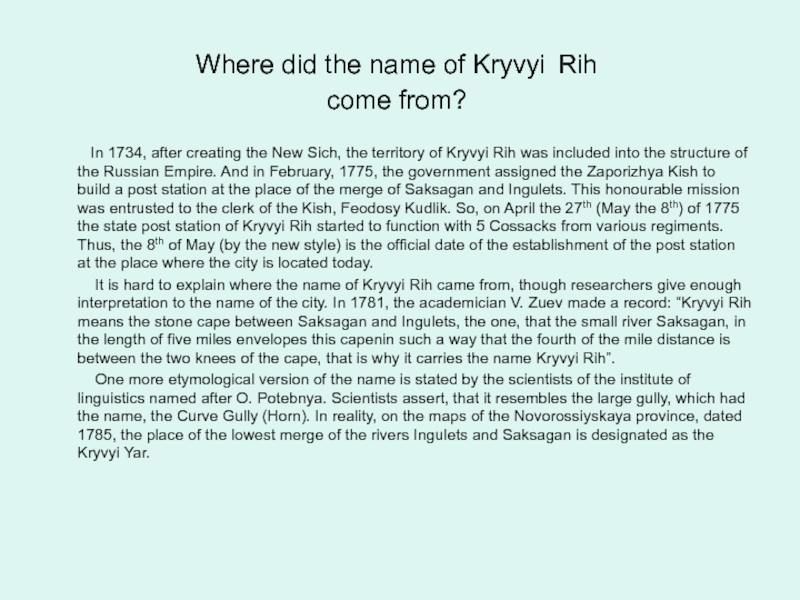
Слайд 4The Biography of the “Kryvorizhstal”
Industrial life was breathed into the
city by Mr. A. Pol. By his initiative, in Paris,
the “Joint-stock company of iron ores of Kryvyi Rih area” (1880) was created which undertook excavation of the iron ore in the Saksagan mine. The excavation was of the open pit-type, and the first mines appeared in five years at Lihmanivskiy and Karnavatskiy deposits.
Rapid development of the iron ore industry of Kryvbas occurred in the 90th of XIX century.
In the 90th, Kryvyi Rih gave birth to the metallurgical industry. In 1892, the Gdantsivskiy iron works began to produce the first cast iron. In 1895 – the Vasilovsky iron works. These were the first steps of the future giant of industry.
In the autumn of 1931, to the so called “third site” has come forty diggers. In 1933, there worked already 17000 men.
Слайд 5On August 4, 1934, the blast furnace “Komsomolka” has given
out the first pig-iron
Another two new blast furnaces were put
into operation. And in five years, in 1939, the first Kryvyi Rih steel was received.
On the eve of the war, in 1940, the mine ”Giant” has given out 18 878 000 tons of ore.
The peaceful and creative work was interrupted by the war.
For more than 30 long months the fascists occupied the city.
The Victory salute was celebrated in honour of the liberators on February 22,1944. The history repeated itself. Kryvyi Rih again laid in ruins. It was impossible to restore the “Kryvorizhstal” at once.
Слайд 6Rebuilding of the destroyed was organised in three shifts.
At the
beginning of the 50th, the citizens of Kryvyi Rih have
restored in complete volume not only the operation of all blast furnaces, but also the excavation of the ore.
The post-war Kryvyi Rih became the deposit of the newest mining equipment and newest technologies.
When another five blast furnace of the “Kryvorizhstal” blast furnace shop were put into operation, it became the largest steel making plant in the world. On the last day of 1974, the ninth blast furnace gave its pig-iron. Launching of the blooming and small-section mills have completed the transition of the “Kryvorizhstal” to a complete metallurgical cycle.
Слайд 7People of the Steel Character
Twice Hero of
the Twice Hero of
the Soviet
Union – V. Mihlik
Soviet Union – D.Glinka
Слайд 8Kryvyi Rih
Kryvyi Rih (Ukrainian: Кривий Ріг; Russian: Кривой Рог, Krivoy
Rog) is a city in central Ukraine. It is situated
in Dnipropetrovsk Oblast, to the southwest of the oblast's administrative center, Dnipropetrovsk, at the confluence of the Inhulets and Saksahan rivers. The estimated population was 690,622 as of 2007.
Kryvyi Rih is arguably the main steel industry city of Eastern Europe, being a large globally important metallurgical center in the Kryvbas iron mining region.
Слайд 9History
The city was founded in the 18th century by Zaporozhian
Cossacks. Kryvyi Rih in Ukrainian literally means Crooked Horn. According
to local legend, the city was founded by a crooked (Ukrainian slang for one-eyed) Cossack named Rih. However, records pre-dating the existence of the city refer to the area by the same name, due to the shape of the landmass formed by the merging of the river Saksagan into the Inhulets.
The area's industrial growth began in the 1880s, when European investment founded a mining syndicate. The metallurgical works in the city, Kryvorizhstal, in particular, expanded through Soviet times, and now remain some of the largest in the world.
During the Russian Civil War, the city and its hinterland were at the nucleus of Nestor Makhno's anarchist insurgency.
During World War II, Kryvyi Rih was almost totally destroyed by the fleeing Red Army. After the war, people lived among the ruins while housing stocks were rebuilt. The housing shortage was met by innovative technological solutions, which meant temporary barracks and houses could be built quickly. The two kinds of cheap new materials[clarification needed] were used later for years afterwards.
Postal station Kryvyy Rih tabernacle was built by order of Peter Kalnyshevsky
The main street of Kryvyi Rih, the beginning of the twentieth century
Olexander Paul studied in detail the iron ore of Kryvyi Rih and proved their commercial value., took the further economic development Dnieper region.
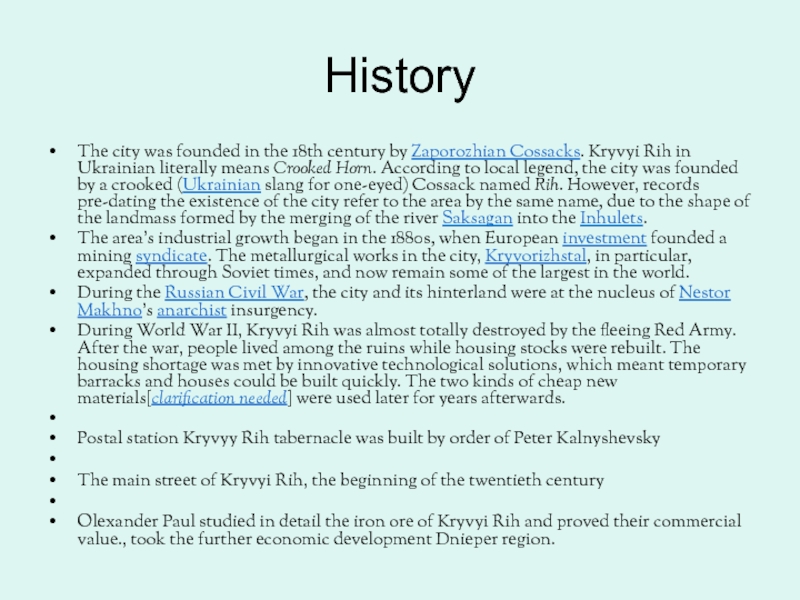
Слайд 10From the History
Postal station Kryvyy Rih tabernacle was built
by
order of Peter Kalnyshevsky
The main street of Kryvyi Rih,
the beginning of the twentieth century
.
Olexander Paul studied in detail the iron ore of Kryvyi Rih and proved their commercial value., took the further economic development Dnieper region.
Слайд 11Modern Kryvyi Rih
The city extends for 170 km from north
to south paralleling the ore deposits. The city is set
in the rolling steppe land surrounded by fields of sunflowers and grain. A short distance east of the city centre, there is an area along a small lake where glacial boulders were deposited. As a result, this area was never cultivated and contains one of the few remaining patches of wild steppe vegetation in the area. The city's environmental and construction safety is a growing problem due to abandoned mines and polluted ore-processing waste.
The city itself is laid out with broad avenues lined by wide sidewalks. Tram lines run down the centre of the major streets. Beside the sidewalks there are usually several rows of trees such as lindens and horse chestnuts. Many people live in rows of 5 to 9 story apartment buildings that are wrapped around large inner courtyards. Many of these courtyards are also filled with trees giving the overall impression that the entire city is built in a park.
Kryvyi Rih TV Mast is a 185m tall guyed tubular steel mast built in 1960, which carries in 2 levels 3 crossbars, which run from the mast structure to the guys. All three crossbars are equipped with gangways that carry additional smaller antennas.
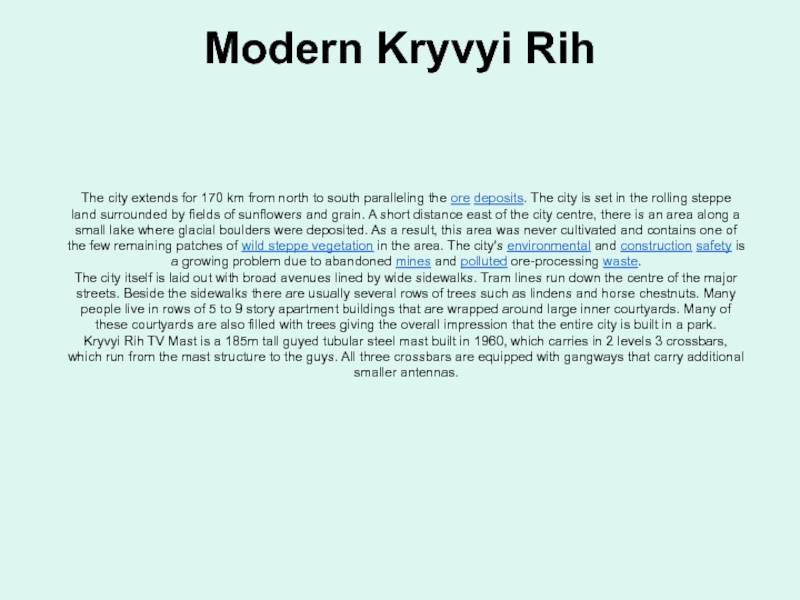
Слайд 12Kryvyi Rih is My City
Boat station
on the river Saksagan
Some of the
biggest flower clock in Europe
Kryvyi Rih Metrotram
Central Station
Christmas lights near City Hall
